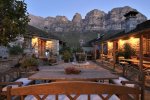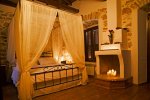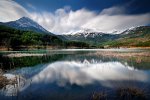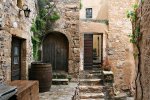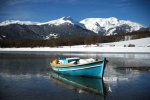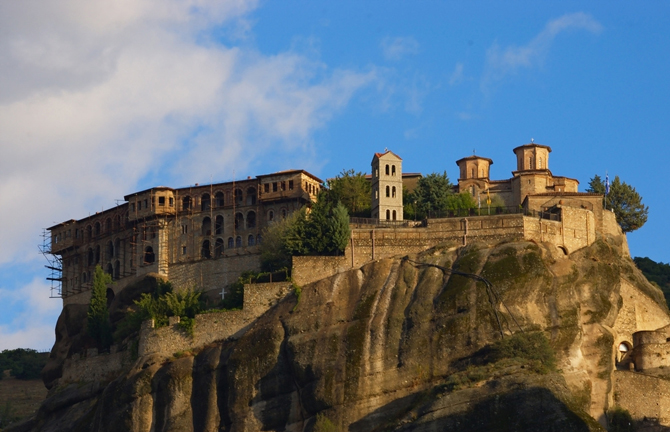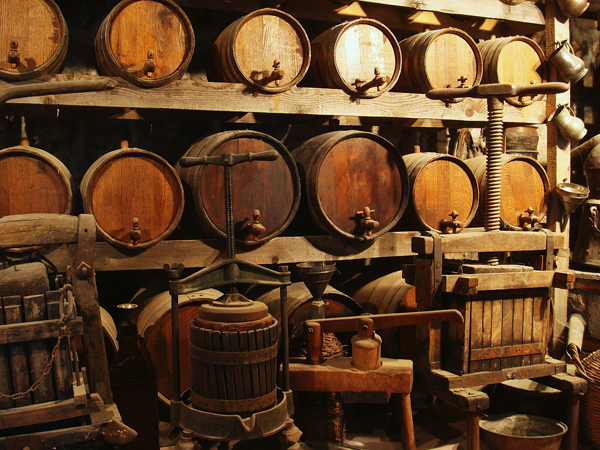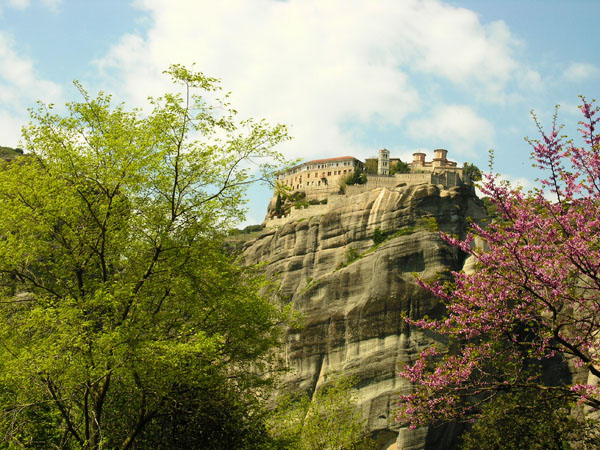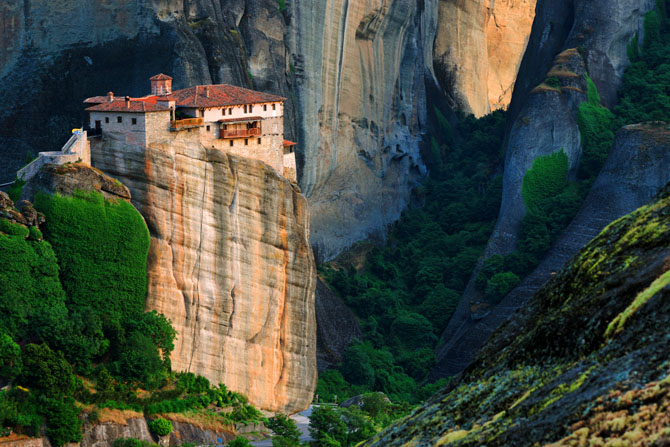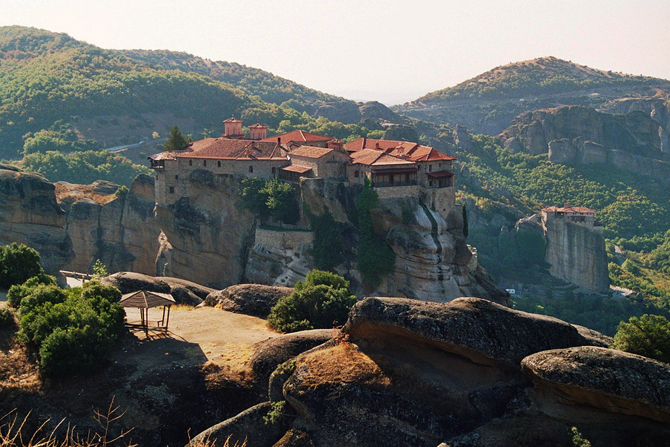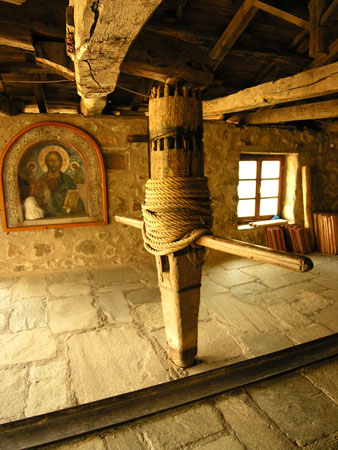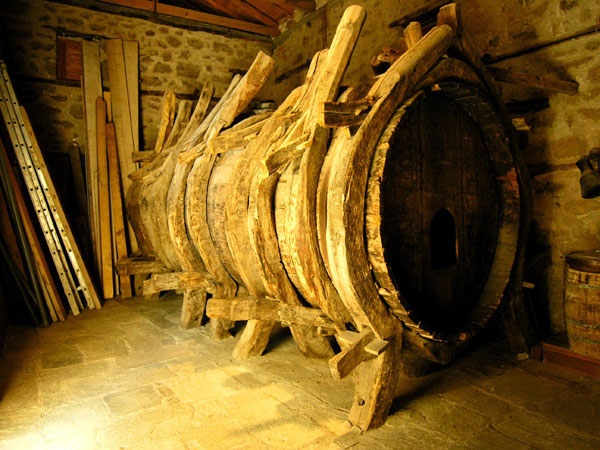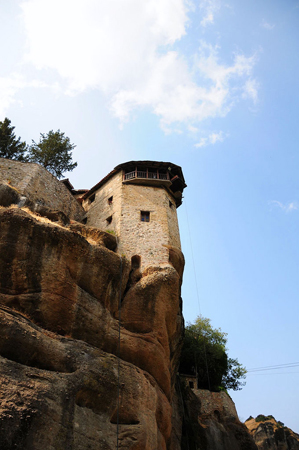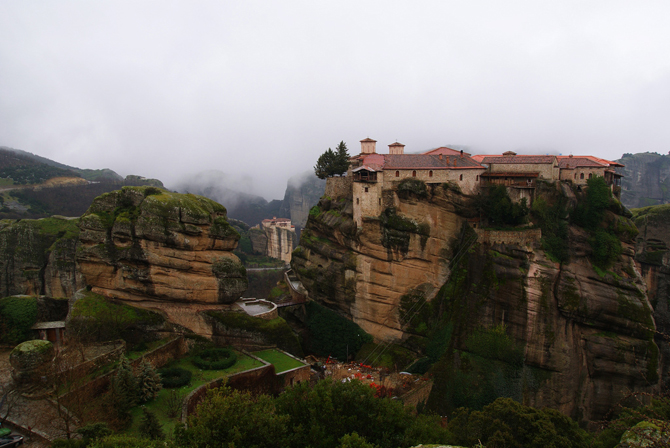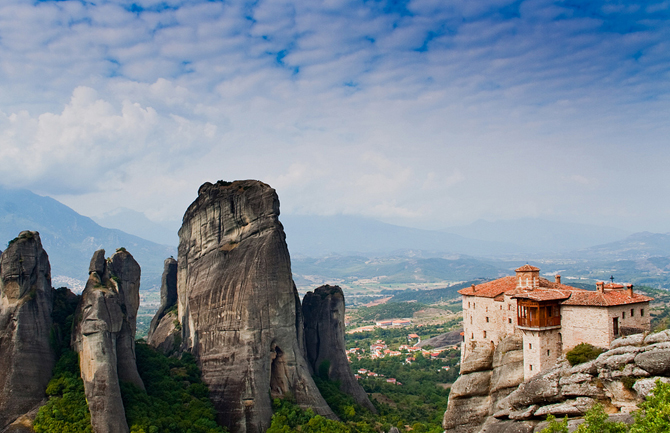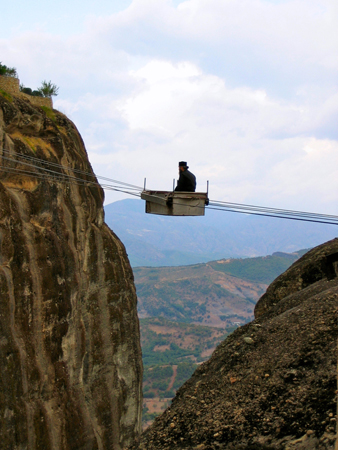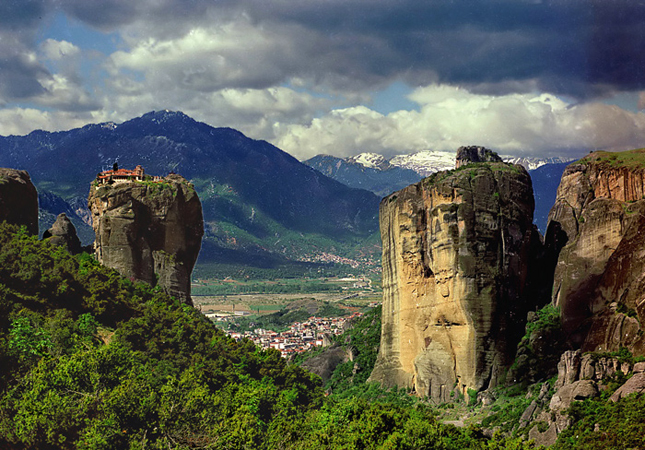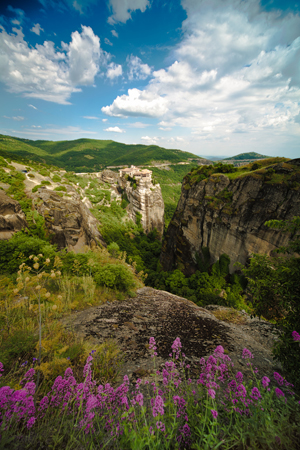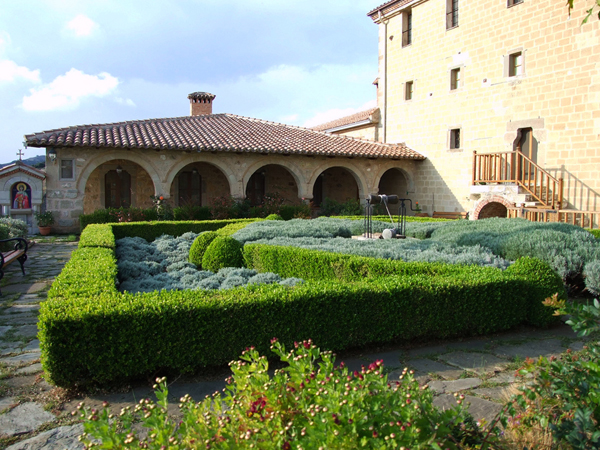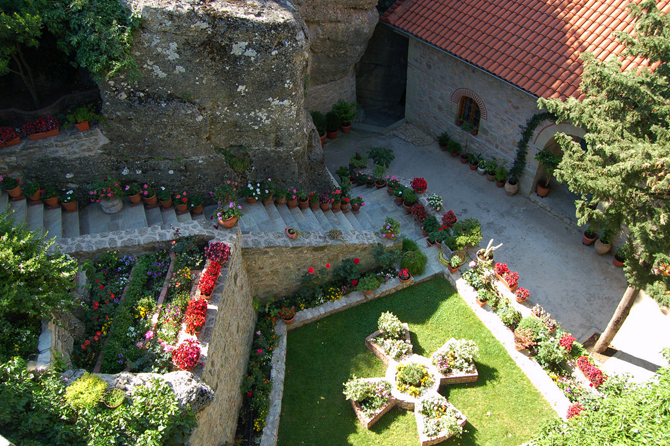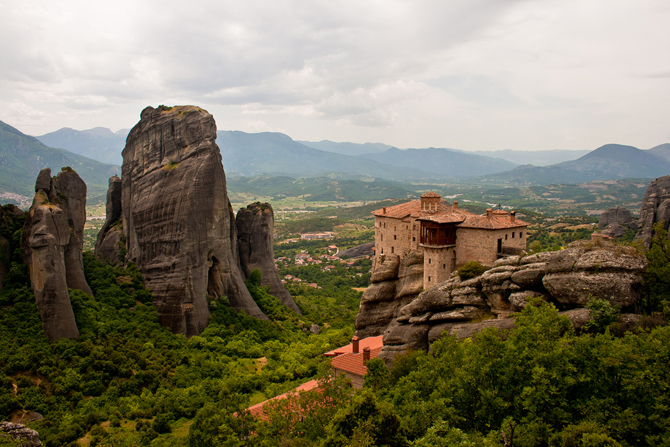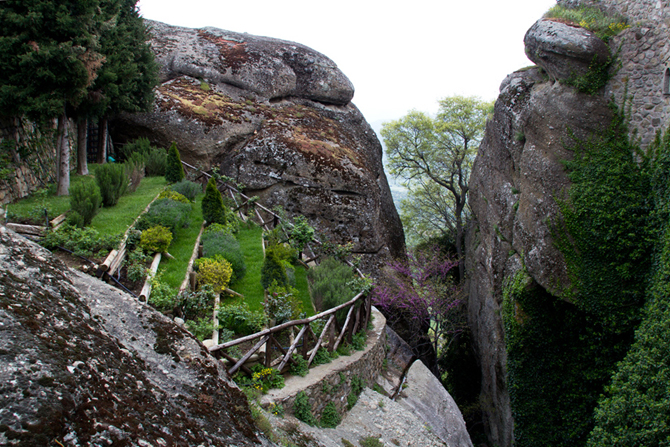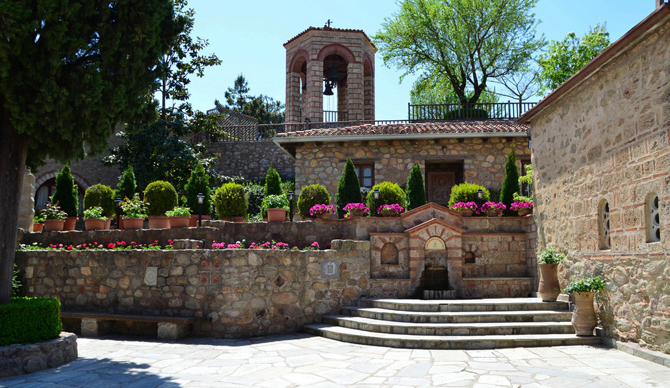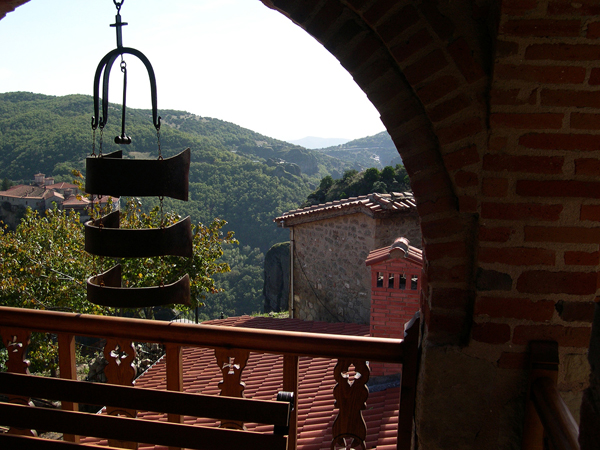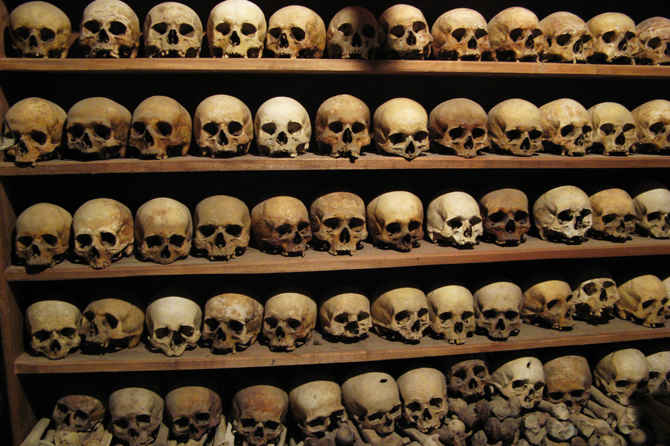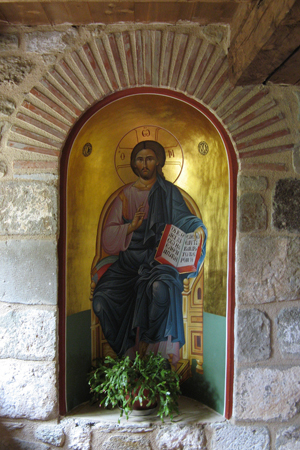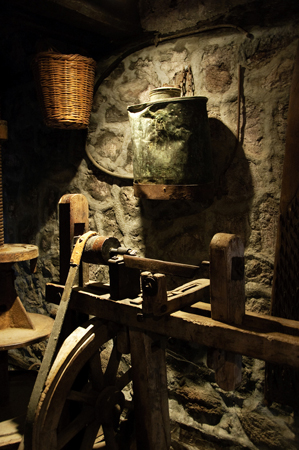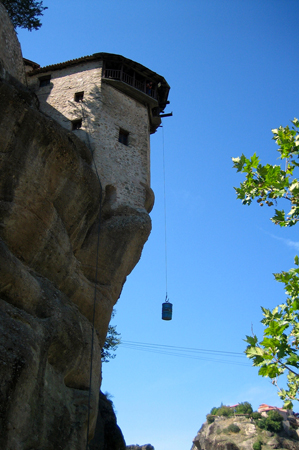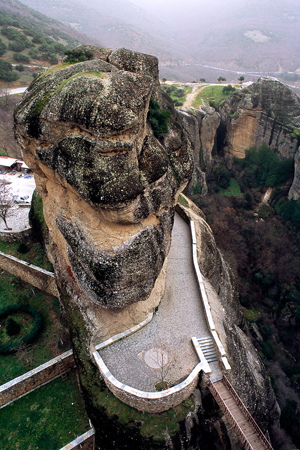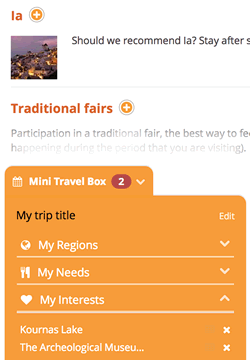The monastic community of Meteora is the second most important community after the one of Agion Oros. The first monasteries were established in the 14th century. Their construction was a risky venture, since the building materials were transferred through the scaffolds on the massifs or in a net that was pulled up by the monks. The view of these monasteries causes wonder and admiration to the visitors, since the monasteries built on top of the rocks look like a natural extension of the massifs. Today only 6 out of the 24 monasteries are open:
- Monastery of the Transfiguration or “Megalo Meteoro”: This monastery was founded in the middle of the 14th century by St. Athanasios Meteoritis at the top of the massif that is now called “wide stone”. Until 1923 the climbing to the monastery was possible with the help of a net. Today there are 146 steps leading towards the monastery. In Megalo Meteoro there are another three smaller churches: the church of St. John the Baptist, Saints Konstantinos & Eleni and St. Athanasios. A priceless collection of codes, byzantine documents and texts of ancient writers is kept in the library of the monastery. Before you leave the monastery it is worth enjoying the view from its yard towards Pineios River and Koziakas Mountain. Opening hours: Summer, 09:10-13:00, 15:20-18:00, Tuesday closed. Winter, 09:00-13:00, 15:00-17:00, Tuesday and Wednesday closed. T:(+30) 24320 22278
- Monastery of Agios Nikolaos Anapafsas: We can reach this monastery following the only road that leads to Meteora and only 3km away from Kalabaka. It was built in the end of the 15th century on a small massif and that’s why it has three floors. The access is possible through a built ladder. On the first floor there is the chapel of St. Antonios, on the second the chapel of the monastery, dedicated to St. Nikolaos and on the third the renovated refectory, the monk cells and the chapel of St. John the Baptist. The monastery is decorated with unique hagiographies by the famous Cretan painter of that time, Theofanis Strelitzas Bathas. Opening hours: Summer, 09:00-17:45. Winter, closed. T:(+30) 24320 22375
- Monastery of Agios Stefanos (St Stephen): At the southeast end of Meteora and exactly above the city of Kalabaka there is this woman monastery of Meteora. Except of the church of Agios Stefanos there is also a church dedicated to the holy martyr Agios Charalabos. An orphanage and a girl’s elementary school were operating in the monastery during the 70’s. The nuns were the teachers and offered home, love and education to the orphans of Trikala. In the sacrarium of the monastery is kept a priceless collection of old documents, codes and various church objects. The access to this monastery is easy through a bridge of 8m length that connects the massif of the monastery with Koukoula hill. Opening hours: Summer, 09:00-13:30, 15:30-17:30, Monday closed. Winter, 09:00-13:00, 15:00-17:00, Monday closed. T:(+30) 24320 22279
- Monastery of Agia Triada (Holy Trinity): This monastery is the most unapproachable of all in Meteora, since it is located on the top of a high massif and the access is possible through 140 steps that are sculptured in the massif. The feeling of fatigue goes away once you face the magnificent view from the top towards Koziakas, Pineios River and Chasia Mountains. In this monastery there is also the church of St. John the Baptist. Unfortunately, nothing has been preserved from the rich collection of the monastery, since the sacrarium was devastated and the library was set on fire during the German occupation. The few icons that were rescued have been transferred to the Monastery of Varlaam. Opening hours: Summer, 09:00-12:30, 15:00-17:00, Thursday closed. Winter: 09:00-12:30, 15:00-17:00, Thursday closed. T:(+30) 24320 22220
- Monastery of Rousanos: The second womanly monastery in Meteora is located between the monasteries of Varlaam and Agia Triada on the top of a steep rock. The access is possible through cement steps and two small bridges. The three-floor building covers the whole surface of the massif. On the ground floor there are the monk cells, while the other rooms and the guest quarters are on the other floors. The church of the monastery is dedicated to the Transfiguration. During the Turkish domination this monastery was used as a refuge for the people of nearby villages. Opening hours: Summer, 09:00-18:00. Winter: 09:00-13:00, 15:00-17:00, Wednesday closed.
- Monastery of Varlaam: This monastery is located on the top of a massif at an altitude of 373m and across the monastery “Megalo Meteoro”. It was named after its first owner, Monk Varlaam. You can reach the entrance of the monastery by ascending the 195 steps sculptured in the massif. The church is dedicated to All Saints, while there is also a chapel dedicated to the three Hierarchs. Opening hours: Summer, 09:10-13:00, 15:20-18:00, Friday closed. Winter, 09:00-13:00, 15:00-17:00, Thursday and Friday closed.
- Anchorete’s’ residences: Except from these six monasteries, there are also remains of other anchorete’s’ residences, small caves in the massifs that are worth visiting. These are: the Holy Skete of Panagia (Virgin) Doupiani, the church of Ipapanti, the church of St. George Mandilas, the Agia Moni (Holy Monastery), the church of Ypsilotera, the church of St. Nikolaos Badovas, the anchorete’s residence of St. Gregory the Theologian, the holy skete of St. Antonios and the holy skete of John the Baptist.
